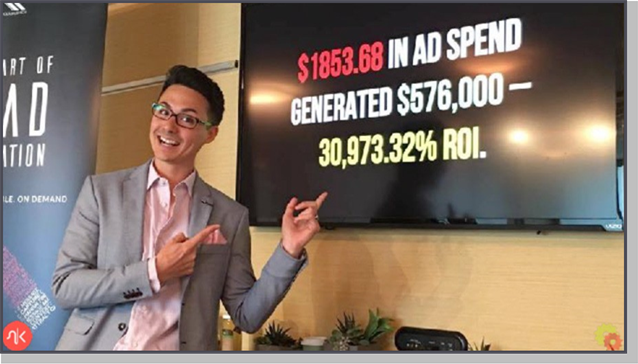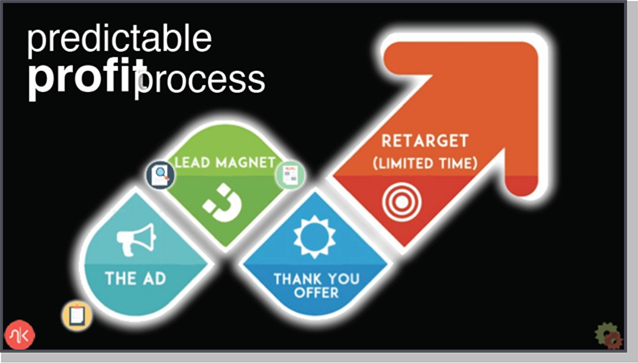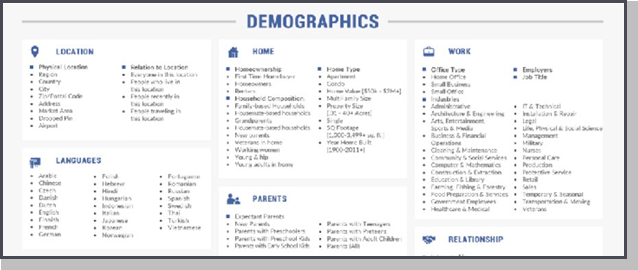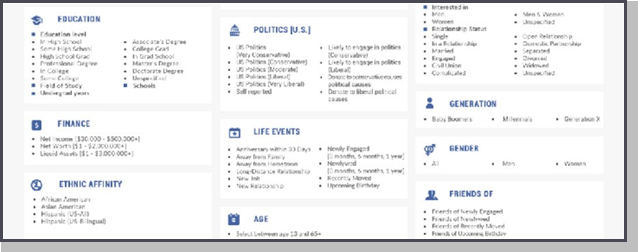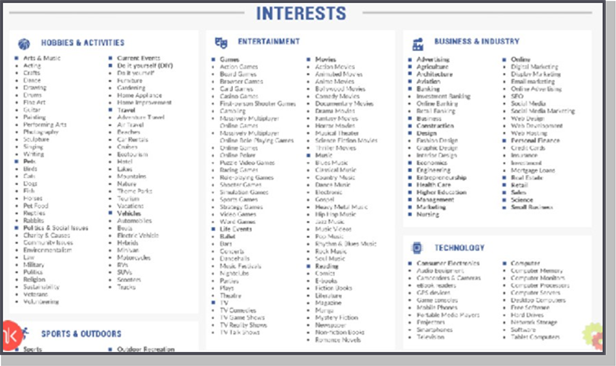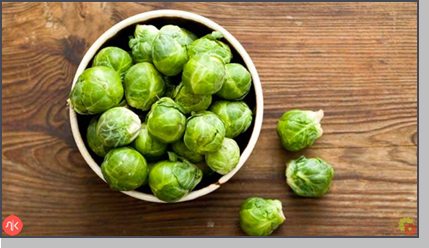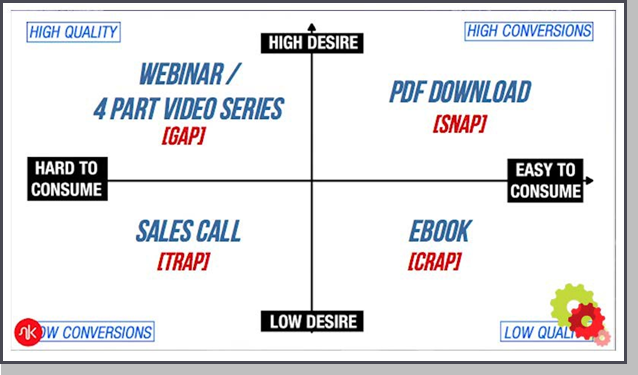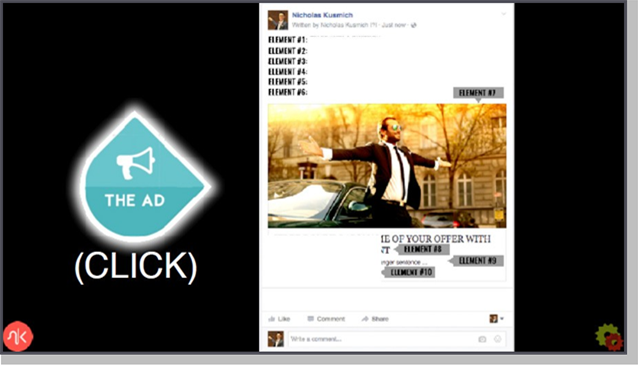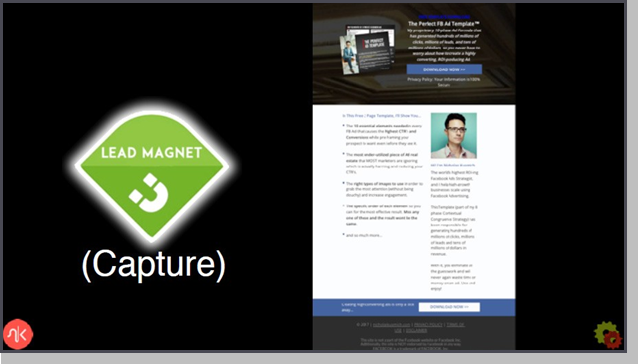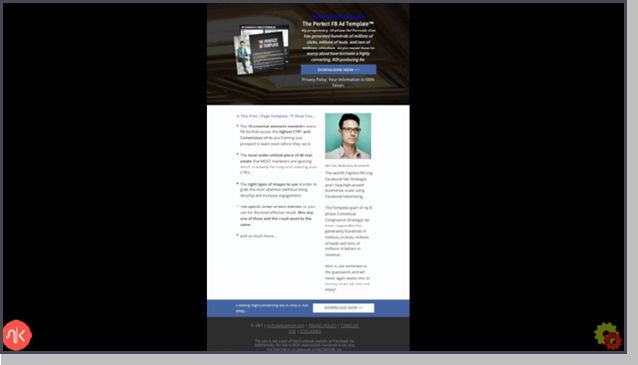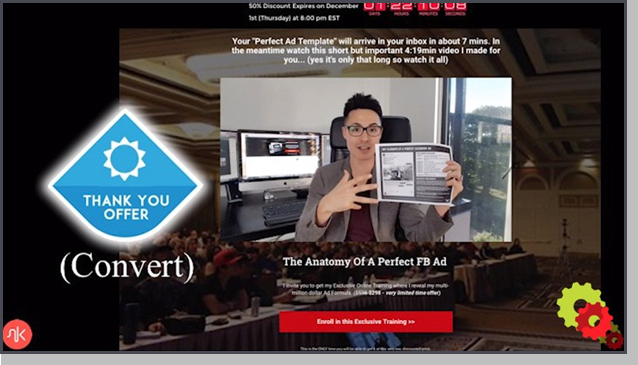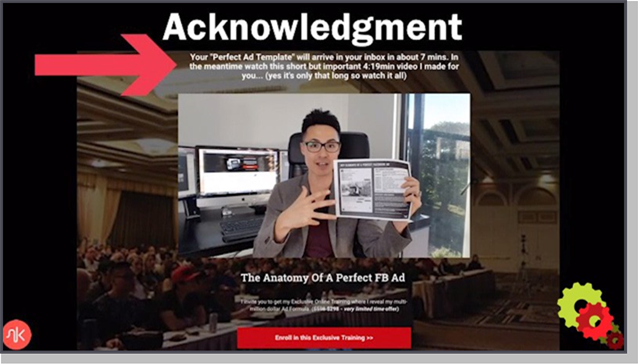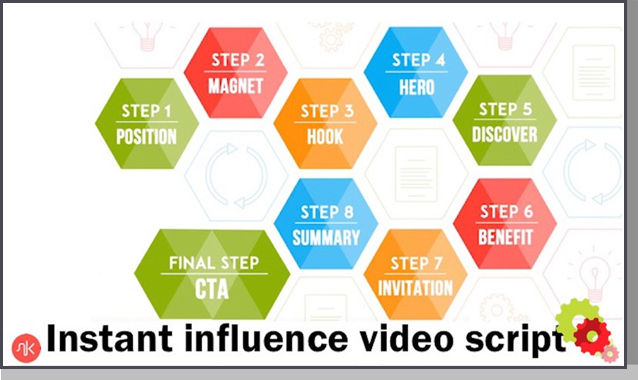Nicholas Kusmich
Nicholas Kusmich is an international speaker, Founder of the H2H Media Group and the Marketers Council, and creator of The Art Of Lead Generation. He is best known as the World’s Leading Facebook Advertising Strategist and for having the highest ROI’s in the industry (up to 30, 973.32%).
Nicholas Kuzmich a unbelievable expert when it comes to Facebook. And not only is he brilliant, but he also matches that with his character and his generosity and his thoughtfulness and everything that he’s done.
You’ve probably seen his ads on Facebook and you never knew it. He is the foremost expert on Facebook ads, he’s the guy who probably has been behind the scenes for many years just working. It’s really hard because a lot of times what happens is that you’re actually the person doing the work behind the scenes for a lot of other people, making them wildly successful.
Seventeen years old. I was sitting in my living room couch. Mom walks up the stairs, tears in her eyes, trying to hide it from her only son. Of course, I know somethings going on. So I ask her, “Yo, mom, what’s up?” She says, “Nothing, it’s all good.” I said, “No, no. Mom, what’s going on?” And
what she didn’t say until later was the fact that she had just gone for a job interview. And because she couldn’t speak the language, they said, “We can’t hire you.” What kind of job you ask? Folding clothes at a laundry mat.
This is just the beginning, because why did she have to go for a job interview? Cause I saw dad have his first heart attack when I was four years old. And then spend a whole heap of time in the hospital until he had a stroke when I was seventeen years old and then that took him out of the game. They had to let go of the little business that they had, that was kind of supplying just enough for our little family to get by and mom had to find a job; now rejected.
I see mom walk through the door, tears in her eyes. I’m a seventeen-year- old kid and I made a commitment that day, that I will never see my mom go through something like that again.
So I started internet marketing. And I failed. I tried everything. Affiliate this, email that, blast this, buy traffic here, do this; and nothing worked. Am I the only person that knows what it’s like to fail on the internet?
Now fast-forward a few years, I came across this thing called Facebook. I said I think there’s potential here. And now we’re doing some great things. We have an agency called the H2H Media Group.
We work with some amazing people. You might recognize some of their faces, and some amazing brands.
We’ve been behind eighty million dollars in product launches in the last eighteen months. Running campaigns, we also have extremely high ROI. Our highest one: 17,804.9%!
Friends, Warren Buffet can’t even get you returns like that. Thirty thousand percent. We’re generating millions of leads, every single month, and some fantastic revenue every single month for some of our clients. It’s just a really great, great place to be.
So last year I decided, I’m going to write a book and summarize everything I know to be true about Facebook advertising and I put it on a book called Give. It’s a great book that kind of disseminates all that and teaches this
to you and then on top of that, we have this fantastic program called The Council, a membership thing, where people can work directly with me. A lot of people have some really good things to say about it because I’m interested in helping people.
On top of that, I have some training programs which we have put on a gold iPad. We give the iPad away free to people who make commitment to a full year with The Council. Another training we have, Anadomy, which is the best FB Ads course out you. It walks through the anatomy of the perfect Lead Magnet, Landing Page, and Ad so you can be successful.
Then we have this program called the Art of Lead Generation, where I lock twenty business owners together in a room and I disseminate everything I know to be true about top of funnel lead generation. If you want to join us for that, check out my website.
But here’s why I bring that up. Because what I talk about in those two days and I do for those clients that are with us, I’m about to reveal to you.
This is not just theory. This is not just great stuff that makes great sense. This is what people pay a lot of money and they get fantastic and amazing results for. I want to walk you through this process.
I’m going to reveal to you a system. A system that puts one dollar in and gets more than one dollar out. A system that’s what I call predictable profit process. IF you don’t have one, I want you to have mine. Because I want you to take this system as you see it there, and I’ll walk you through all of the steps. Deploy it in your business.
It doesn’t matter if you’re a beginner who’s never run an ad before. Or if you’re spending millions of dollars a month on Facebook. It doesn’t matter where in that spectrum you are, this is the process that’s going to help you get there.
It doesn’t matter if you’re brick and mortar. How many people e-commerce? How many people information product? The beautiful thing about this process is that this applies to you, no matter where you’re at in that whole scheme of things because I believe, as an entrepreneur one of the greatest skills you need to possess is this, turning paid advertising into predictable profit.
When you have this, and you know this, and you understand this, you can skill at will. And a predictable profit process, what that allows you to do is know that every time that you put a dollar into the Facebook machine, you get more than a dollar back. At will. How many people could benefit from that kind of information? I want you to have my system more than anything, I just want you to really deploy it because when it comes down to this, there’s only three things that matter.
In terms of being successful with internet or digital marketing, you could learn every tactic known to man, but at the end of the day, there are three things that matter:
- One, the first is content. But more specifically, how does your content or your message stand out from your competition. So it’s not a just a good content. It’s having content that stands out.
- Number two, distribution. In other words, how many of the right eyes and the right ears see and hear your content.
- And then number three, conversion. Cause what good is it, if the right people hear and see the message you have to tell them, and yet nobody buys?
And so you put all this together and if you can say, “I’m going to commit to learning those three things,” you’ll be well on your way.
In this discussion, we’re going to look at it by looking at four key principals: Used cars, a Beverly Hills Housewife, Sex with Strangers, and the Godfather.
Principle of the Used Car
I got a new car, that I’m willing to sell. You should be asking two questions. What kind of car and how much?
I have an answer for those two questions and as soon as I answer them, you gotta tell me yes or no. Are you ready?
It is a million dollars and it’s a used car. Would you like it? No. Anybody else interested in a used car for a million dollars? Now, most people would say no, now that kind of seems not working and then reason why you say that is because I only told you a little bit about the car.
What’s the problem with the car? Well it’s too much money and it’s used and I don’t want a used car. Let me tell you a little bit about the car.
It’s a 1962 250GTO Ferrari that Hans Thulin owns in Sweden. He bought it for 10.8 million dollars. Today it’s worth just over fifteen million dollars, but he is looking for a tax write off. Simultaneously, we just found out that an Arab sheik is flying in from the Emirates to San Diego because he wants that car. He’s willing to pay ten million cash, right now, to purchase that car.
Let me replay the scenario for you. It’s a fifteen-million-dollar car, he’s selling it for one million. You could flip it tonight for ten, meaning you profit nine million bucks in your pocket in one transaction. How many people are now interested in my used car? Any everyone else, what is wrong with you?
Now what happened? Did the terms of the offer change? Was it still a used car? Did it still cost a million dollars? Then how did we go from zero to maybe half the room of half the honest people and maybe seventy five percent of the room of everybody else now wanting this car?
We described value through narrative. Friends, when you’re trying to sell what you sell. When you’re trying to say what you say. When you’re trying to get the message across to the people that are most likely to buy from you, most of us focus on price and logic and feature, maybe some benefit. If you want to make it work in the social sphere of things, if you want to have your message stand out above everybody else who’s selling what you’re trying to sell and you want to be in a blue ocean, a category of one. Your business is contingent upon your ability to natively story tell and provide value
through that. That, my friends, is how you get your content to stand out amongst everybody else.
So, you have a message now that needs to be heard and you’re communicating it in a way, through narrative and storytelling that gets people to say, “Ahh, I get it. I want it.” Now once you have something that stands out, you need to get the right eyes to see it and the right ears to hear it. Now here my friends, is where a beautiful platform, called Facebook, comes into the game.
Facebook’s Paradox of Size
See what I love about Facebook is what I call the paradox of size. On the one hand, it’s huge. One third of the global population is on this platform. They say almost three billion people are on this platform. What does that say in short? It doesn’t matter what you sell, who you sell it to, B2B (business to business), B2C (business to consumer). H2H, as I call it, human to human.
Your ideal prospect is ninety-nine percent likely to be on the platform.
But that’s not why it’s so beautiful. Back in the day, if I were to say, “What’s the pinnacle of all advertising? What’s like the thing that everyone wants to get on?” What would you say? The Super Bowl? Why? Because of the number of eyeballs watching at that moment. It used to cost a million dollars to run an ad on the Super Bowl, now a little bit more than that, but let’s say the distribution was fifty million people who were watching that. In fact, let’s call it a hundred million. If I could say that I could get you a hundred million eyes, maybe even the same hundred million eyes that watch the Super Bowl, but I could get that for you for ten thousand dollars, how many people are in?
Now most people would say yes. I would say, “You out your mind if you do that.” Because we’ve pivoted away from this idea of mass marketing. Not everybody wants to know what you are selling. We’ve moved from mass marketing to micro marketing.
It’s not just getting eyes and ears, it’s getting the right eyes and ears. Fortunately for Facebook, it’s not just a social media platform, it is the greatest data aggregator in the world. Facebook knows you better than you know yourself. How do I know? I woke up this morning and I looked at my phone and it reminded me what I had for lunch four years ago.
I forgot what I had for lunch four years ago. Apparently four years ago, it was the cool thing to do to take a picture of your lunch and share that with the world. Facebook knows where you are. Facebook knows everything about you. And for the intelligent advertiser, the simple business owner, who knows how to tap into this algorithm that is — simply knows how to find those people — the smallness of Facebook is where we choose to play.
I’m just going to show you a bunch of things that you can target when you’re on Facebook. Maybe you didn’t know this, but let’s go through this really fast. Location, we can know the region, the country, the city, the zip code, the address, the market area, the dropped pin, the airport. They can know if you’re visiting the location, if you live there, if you’re just moving there, if you’ve traveled there in the last little while.
It knows the type of home that you live in, the office work that you do, whether you’re parents, expecting parents, new parents, parents with preschoolers. Just had a son five weeks ago, bloody hell I haven’t slept in five weeks. And I’m seeing ads, are you lacking sleep?
Damn, Facebook advertiser knows what language you’re speaking, it knows the education that you have, the political bank you spin towards, the finance that you have, your net worth, your net income, your liquid assets, life events, gender, generation, friends of, it shows the education.
It knows that you like shooter games. It knows the technology, the audio equipment that you use. That you’re interested in pet food, it knows the sports you play or follow, the shopping, the fashion, the food, the family, the relationships. It knows your finances, your auto, what kind of car you drive, where you travel.
It knows all and all, I’m not going to go on and on. It knows a whole lot about you. Now how many people think that that information is valuable when you’re targeting your next ad? So, the question then is, “well how do I get started?”
The Targeting Trifecta aka the Beverly Hills Housewife Principle
There’s so many things that I can target, so I’m going to show you what I call a simple framework, called the targeting trifecta. This is all you need to know. That you could go home right now, today, and start deploying and narrowing on your most ideal prospect, so only the people who need to see your advertisement and your communications see them. The first thing in, what I call the three F’s.
Follow – Who do they follow?
The first thing you’re asking is: Who does my ideal prospect follow. What’s the word? Follow.
Are there gurus, are there brands, are there people in your space that your ideal prospect is most likely looking at and thinking, “yeah, I follow that person.” In fact, if I were to say, “Personal Development,” who’s the first person who comes to mind? Tony Robins. So, you can either go after the mass market and say, “Hey, I got a personal development thing,” or you could say, “Hey I want to target only those who follow Tony Robins, or maybe bought Business Mastery, or any one of his programs.”
What do you think would be better? Right, so you want to ask yourself quickly, who does my ideal prospect follow?
Frequent – Where do they frequent?
Next, you need to ask: Where do they frequent? Is there a certain blog or online publication that you know that they’re reading on a daily basis? Is there a piece of magazine that they get at home? Is there a newspaper that they’re visiting? Is there a country club, is there a store, is there a book, is there a trade association, is there a conference?
If you know that somebody attends Traffic and Conversion Summit every single year, what does that tell you about that person? They’re interested in digital advertising. So just by knowing where they frequent will give you great insight.
Fund – Where do they spend their money?
Lastly, fund. Where they spending money? If you knew that someone bought their groceries at Whole Foods, what does that tell you about that individual? They’re health conscious. They’re wealthy, discretionary income. Status is important to them. I find people that shop at Whole Foods love to tell other people they shop at Whole Foods. Look at my fourteen- dollar potato.
Facebook is hands down the best targeting platform in the entire world and all you got to know is where do they follow, where do they frequent, what do they fund, and all the sudden tonight, you can start dropping ads in front of your ideal prospect and all of a sudden get people responding to you.
Phenomenal, yes?
You may be wondering why I call this the “Principle of the Beverly Hills Housewife.” It has to do with how we can utilize the Targeting Trifecta to zoom in on our ideal customer. For instance, if I wanted to target a Beverly Hills housewife who lives on a particular street based on her zip code, and who shops at Whole Foods, has an Amex card, and spent money on it in the last seven days or so, with all the information available on Facebook, I could.
The “Sex with Strangers” Principle
Hey, my name’s Nick. Would you like to have sex tonight?
Don’t answer, don’t answer, don’t answer. Totally inappropriate, yes? Or not. I’m from Canada, we don’t really do that. Maybe here. Totally inappropriate.
Nine times out of ten, if I would have done that, I would have got slapped in the face. One time in ten, I might have got lucky, but it wouldn’t of ended well. Now you say, that’s totally inappropriate, why would you do something like that? Totally not cool.
Yes, except as a entrepreneur who’s advertising on Facebook, you do the exact same thing every single day. Except it sounds like this:
“Hey, I don’t know you, you don’t know me, but buy my shit.”
I don’t know you, you don’t know me, I know you work really hard for your money, I’m going to give you almost no reason and some sleazy marketing tactic to try and get you to buy and buy now. That’s totally inappropriate.
That’s not how we play this game in the digital social space.
The reality is most people are doing advertising incorrectly and it’s because they’re breaking two golden rules. Golden rule number one is this, you must give before you what? Ask.
You must give before you ask. The more you give, the more you earn the right to ask for someone to do a transaction with you. If you ask too early, too soon, you are shooting yourself in the foot.
The second rule of online marketing is every step of your marketing process should be valuable in and of itself. Meaning, if anyone ever walks away from a conversation with you, whether digitally, virtually, real, or not, with any piece of content that you have out in the marketplace, if that person doesn’t walk away from that experience saying, “Wow. That was really valuable.”, you’ve done it wrong.
Frankly, I want everybody in this room to do business with me. But I realize that not everybody in this room will. But, I sure as hell will be pissed off if anybody walks out of this room saying, “I didn’t learn thing.” My goal is to make every interaction with me that of a valuable one. That’s what I want to do.
Anyone know what this is?
Brussel Sprouts. How many people like Brussel sprouts? Oh, you liars. No. No. Maybe on a skillet, wrapped in bacon, covered in dark chocolate. No, that’s a little too far. My parents used to try to feed me Brussel sprouts, under the guise that it was good for me. Frankly, I didn’t care that it was good for me. I didn’t want it. Yet, they tried to force it down my throat.
Yet, how many online entrepreneurs are like, “I wonder what my target market wants?” And you create Brussel sprouts. Crap that nobody wants. And say, “Here, you can have it for free. Just give me your name and your email.”
Lead Magnet Matrix
Let’s get away from the Brussel sprouts and let’s talk about what we should be giving people. I’ve designed this, I call it the lead magnet matrix, and the basic premise is that you’ve got to give before you ask.
So what is it that we give? Well easy to consume, hard to consume on one axis, and high desire to low desire on the other.
Back in the day, like seven years ago, what was the number one thing to give your marketplace in order to get a name and an email address? E-book. How many people have downloaded an ebook? How many people have read the ebook that you’ve downloaded? How many people have written an ebook.
How many of you have read your own ebook?
You don’t even read your own ebook and your expecting someone else to read the ebook. We’re going to say that that’s easy to consume, but nobody in their right mind wants another ebook anymore. Can we agree?
Moving on, some people, I even see ads that say, “Hey. Come. Let’s get on a ‘strategy’ consulting call.” A free strategy call. What does our market know that that is? Sales call. And they don’t want it. It’s hard to consume and there’s low desire. Don’t be offering strategy call, nobody wants it no matter how you paint it.
Moving hard to consume and high desires, like a webinar four-part video series. Let me prove the point. How many people have ever registered for a webinar before? How many people have showed up to that webinar that you registered, one hundred percent of the time?
So people want it, yes. But is it hard to consume, yes, because you’re essentially saying four days down the road, when I host this, I’m expecting you have nothing on your calendar to show up and sign up. So, we don’t want to do that.
Or a four-part video series. How many people have joined into a four-part video series and you saw video one and you’re just like, “Just give me video two dammit.” And they say, “It’s being released in three days.” You think, “Forget that, I’m going somewhere else.” Anybody? People want it, but it’s hard to consume.
Then, high desire, easy to consume. This is what we have found to be the number one lead magnet offer that exists out there. I’m just going to call it a PDF download. You could call it a cheat sheet, a blueprint, a recipe, a guide, an execution plan as a DigitalMarketer calls them, whatever it may be. It’s one to two pages of executional content that someone can take and deploy.
Now here’s the thing. We want to give somebody something that they can download in a snap.
In order to get people to eventually fill the gap, or the idea is, “snap takes them to the trap.” If they don’t go into the trap, then you fill it with the gap, but at all, always avoid the crap.
So then if we’re going to give something away for somebody. It’s got to be a download, it’s got to make sense. What is that thing going to be? Let me just give you a quick, quick acronym, yes. A quick acronym that you could follow that when you’re designing your lead magnet. By the way, how many people are just glad that you don’t have to write an ebook anymore? You’re welcome.
Every lead magnet should be SAGE. What’s the word? SAGE.
S stands for short. What’s is stand for? Short. The idea is when you give somebody something there should be a four to seven minute consumption time. They need to be able, if they don’t know you, they ain’t gonna give you longer than that of their time. We have two currencies that we transact with. Time and money, which is more valuable? Time. So, don’t ask for more than you need to. Short, four to seven minutes.
Actionable is the aim. You don’t want to just give somebody information, what you want to give them is insight. What’s the difference between information and insight? Insight is the ability to apply information to get a desired outcome. When you can curate information, give someone a step to take to get a result, they’re gonna be happy.
Number three, goal oriented. Everybody is moving towards a specific direction and if you can get them one step closer, how many steps closer? One. Not all the way, that’s too much. One step closer with this PDF download, they’re going to love you.
And lastly, it’s got to be super easy to apply. If you can have it short, actionable, goal oriented, and easy, that is the thing you want to give away.
Every lead magnet should be SAGE — Short, Actionable, Goal oriented, Easy.
Key Principles to a Great Ad
We got the targeting down and we got the lead magnet created. Now we need to create an ad, send them to a lead magnet landing page, do something on the thank you page, and watch what happens in the last little bit.
First, everything starts with a great ad. A great what? Ad!
I believe there’s three key principals to having a great ad. Look, hook, and took. Look is capture attention. Hook is draw them and create a connection. Took is give them a call to action.
For the sake of time, I’m going to show you one of my best strategies for capturing attention. We always capture attention in the newsfeed with a great what? Image. If I were to ask you where’s the best place to hide a tree, what would you say? In a forest. Why? Because it blends in.
So, in this case, we want to do the opposite. Without getting into all the psychology why, if you’re just scrolling through your newsfeed and all you see is just color image after color image after color image, how might you get your image to stand out?
You might go gray scale. By simply going gray scale on your image, all of a sudden it stands out in the newsfeed and people pay attention. Now don’t undermine the simplicity of this. A guy by the name of Gerald came up to me, said, “Remember that thing you taught me about gray scale? We were getting zero traction on our ads. We added the same image gray scale and made 50K with the exact same ad, but now, we’re getting people’s attention.” So, create an image that pops.
Secondly, you want to create a connection.
Now once you have an ad, you’re going to drive them to an opt-in page. Now an opt-in page has ten elements that make it great. For the sake of time I’m going to give you three, following the same look, hook, took principles.
One of the things that your Facebook compliant, high converting opt in page should have is the 3D rendering of the actual download that you’re going to give them. Now, I don’t know why people don’t do this more often, but it’s apparent when you make something appear, like they’re going to get something, even though it’s just digital, it is increased conversion rates dramatically, just because they feel like there’s a little of tangibility to it.
Next, once you actually add that thing, the next thing you want to do is build rapport through a good salutation. Do you remember the days where all you had to do was put a headline and a button and you could get opt-ins. Those days have come and gone. First, Facebook doesn’t allow for that to happen and secondly, so many people are hiding behind crappy marketing opt-in pages that the trust level of the general marketplace has gone down.
So now, if all of a sudden, they see an opt-in page of a friendly face that says — “Hey, I’m Nicholas Kuzmich, this is what I do and this is who I help.” — we have found that pages that have a salutation and an image of the person behind the magnet versus those who don’t, get dramatically better results.
Thirdly, you’re going to have a button on that page. And that button is going to say what? It’s going to say what? Download. We have split tested every potential variation of a call to action button and we have found that the words “download now” with two carets works best, like this: Download Now
>>. It’s not “download now” with one caret, we tried that. Literally, download now with two carets is what outperformed everything else on that page.
Quick note, what color is that button? Blue. What kind of blue? Facebook blue. 3B5998 is the hex code for Facebook blue. No extra charge.
So, you have a great, high converting ad that is now being pointed to a slick opt in page that has the ten key elements on it, that’s offering a SAGE lead magnet, you’ve now captured the lead, and where does that lead then go? To a thank you page.
It takes them to a thank you page. Now pop quiz, what is the worst thing you can do on a thank you page? Answer: Say thank you and give the person the thing that they ask for.
Why? Because if you do, what do they do? See ya!
Now think about the mass amount of momentum that was built to get them there. They’re on their mobile phone, they’re going like this, like this, like this, BAM! They see a black and white image, and like, “Whoa! What’s this?” You write a great copy following the template, and they’re like, “Whoa. I’m going to click on this!” They click on it, they get to the landing page, they now see your face, they see the 3D image, they see the “download now” blue button with two carets and they’re like, “I want it.” They push it, then they’ve gone through all this motion and then all of a sudden, you’re say, “See ya.” Some people get mad, because all this forward momentum is lost.
Elements of a Great Thank You page
So, what can we do on a thank you page? Now, here friends, is where you want to pay extra attention, because this is where the money’s made. This is where you become profitable on day one with your Facebook ads. There are four elements to a great thank you page. How many elements? Four — Acknowledgement, video, irresistible offer (what we call a Godfather offer) and a deadline.
Let’s look at the acknowledgement. The first thing I say on my page is, “Hey. The thing you asked for will arrive in your inbox in about seven minutes.” Why do I say seven minutes? So they don’t abandon ship. If I were to say, “Hey the think you just asked for, it’s in your inbox right now.” What’re they going to do? See ya!
But if you say, “Hey, it’s gonna arrive in your inbox in about seven minutes,” You’ve just bought yourself time. And frankly, I even say in my videos, “Why? Because I have a very special message to show you for the next three minutes.” And through the power of technology, I’ve ensured that that be so.
So first, the acknowledgement and then you buy yourself time. Next, you have a video.
You got to have a video on this page. Now for the sake of time, I can’t teach you this entire video cause it’s a nine-stage script that we’ve developed that allows us to get six percent conversion rates, like that, on cold traffic, on this page.
Thirdly, the irresistible offer. It has what I call a Godfather offer. Why is it a Godfather offer? Because it’s offer that they can’t refuse. If you want to increase your conversion rate, on the thank you page, after someone has gone through this entire process, you need to be thinking about the best darn offer that you could possibly conjure up. To say, “Hey friends, we just met, and I’d love for you to take this further. This is what I’m allowing you to have.” The best gosh darn Godfather offer possible.
The Godfather Principle
Now there’s two things that make up a good Godfather offer. One of the most important things is your reason why. If you just say, “Hey! I’m giving you a discount,” they’ll think, “huh?”
Robert Cialdini teaches us that even if we have a reason, any reason why, that’s better than no reason. But the better a reason, the more likely they’ll take you up on it.
Can I tell you quickly my reason nine times out of ten? Usually we’re offering a fifty percent discount on whatever we’re offering there, and this is my legitimate reason why.
“Hey, I know we just met and I want to get this relationship started off on the right foot. So, here’s what I’m going to do for you. I’m going to buy my thing, I’m going to buy fifty percent of my thing for you, and if you’ll just meet me halfway, you can have it for the other fifty percent. This way, we get started on the right foot, we have a great relationship, and we can get down the path of getting you the results you’re looking for.”
Cause the thing is, you don’t want to piss the people off who aren’t ready to buy right now. How many times have you seen,
“HEY! BUY NOW! BUY NOW FOR GOODNESS SAKE, YOU’RE ONLY GOING TO SEE THIS ONCE, YOU’RE ONLY GOING TO SEE IT EVER, AND IF YOU DON’T GET IT NOW, YOU’LL NEVER GET IT UNTIL THE DAY YOU DIE.”
And you’re thinking, “Well, I’m going to pass it up, but also, I don’t like you anymore.”
So you need a really good reason why and the last thing is a deadline.
There’s only three reasons why somebody might not buy from you. Reason number one, they don’t trust you. You overcome that with social proof, with authority, with credibility, all these types of things.
The number two reason they wouldn’t buy from you is because they don’t trust themselves. How many people were thinking about buying a certain program, call it internet-market-based or weight-loss-based or whatever, and you’re like, seems like a great program, but I just don’t think I’m going to follow through on it, because I let myself down already ten times. So, they’re thinking I don’t trust myself to follow through. You overcome that by giving them a short, actionable goal oriented, easy lead magnet, they get results, now they’re in with you.
But the third reason why people don’t buy is because they feel like they have time to make a decision. How many people have been browsing on Amazon? You open up a new tab and you’re like, “I want that, I’m going to come back to that. Someday.” When does someday come? Never.
So the idea of how do we eliminate the time gap, frankly, without being a jerk? Because if you say, “BUY, BUY NOW, BUY NOW! If not, you’re going to die, it’s terrible, it sucks,” people are going to be like, “Uh jerk.” But how do you do it in a way that’s elegant? Something that says, “Hey, frankly, I can’t give you all the time in the world, but I can give you some time.”
What would that timing be? I would say that in all of our tests, we would say that in seventy-two hours, three days, is long enough for someone to say, “Hey, go. Talk to your significant other. Think about it. Do your due diligence. Look up on me. See if it’s something that you really want and in three days you have that timeframe to comeback and make a decision if that’s good for you.”
Friends, if you put this on your thank you page, man oh man, you’re going to see the conversions increase dramatically. Do you agree? If we just stop there, how many people think that would be great?
But there’s one more element that will take you from six percent up to twenty- two percent conversion rates within that seventy-two hour windows. And it looks like this.
In that seventy-two-hour window, two things are going to be happening simultaneously. On the top, three emails are going to be sent out. One day one, day two, day three. On the bottom they are going to see three Facebook retargeting ads. One on day one, one on day two, one on day three.
The combination of the two, cause if you just gave them three days and said, “See ya later, come back when ya remember,” they’re not going to remember. But if you stay in front of their face, again, in a beautiful, but elegant way and just remind them, “Hey. That thing is still available, but for just a limited number of moments or time.”
This one thing here bumps your conversion rates from six percent to up to twenty-one percent dramatically. If you do nothing more, add this to your final sequence, and everything will change.
- Create a great ad and make sure you target the right audience
- Develop and offer a lead magnet with value
- Add in a thank you offer
- Redirect, for a limited time, when people don’t buy right away
It is the keys to the kingdom. If you’ll simply take this and deploy it into your business, you will see fantastic results.



